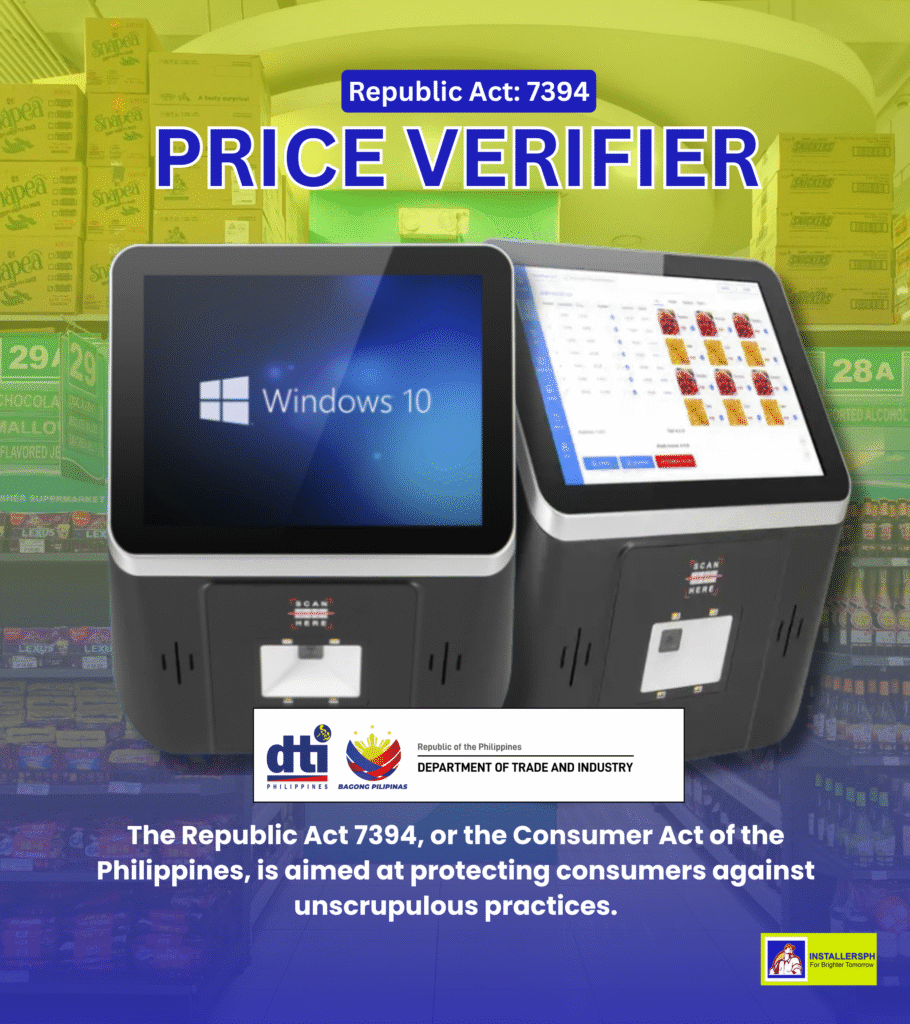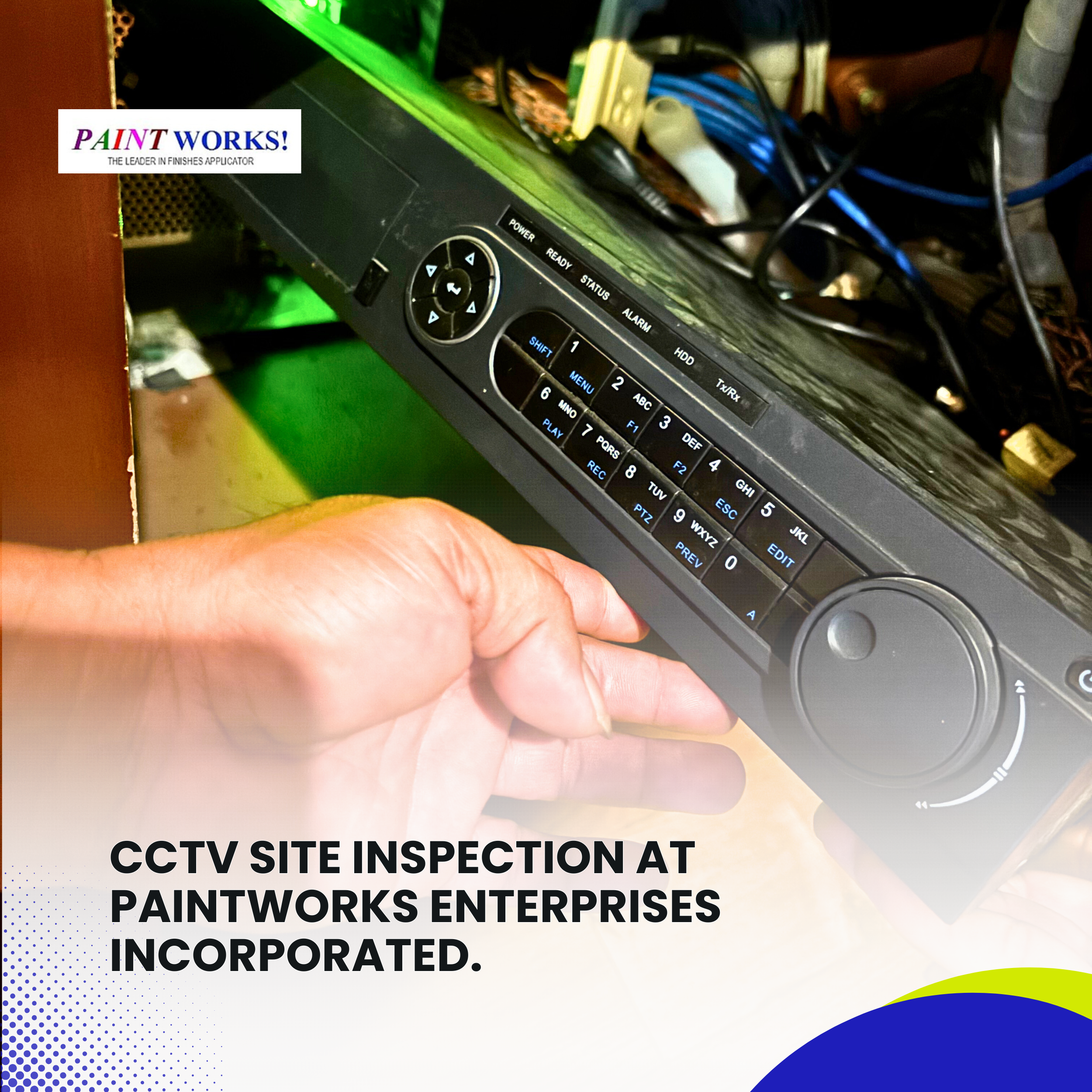CCTV Site Inspection at Paintworks Enterprises Incorporated. Introduction. InstallersPH IT Solutions recently conducted a CCTV Site Inspection at Paintworks Enterprises Incorporated to assess the condition and performance of their existing surveillance system. …
Why Every Retail Store in the Philippines Needs a Price Verifier (RA 7394 Explained).

Introduction
Running a successful retail store in the Philippines requires more than just a good location and competitive prices. Business owners must also comply with legal obligations that protect consumers. One of the most important laws governing this sector is Republic Act 7394, also known as the Consumer Act of the Philippines. Ignoring it doesn’t just jeopardize your bottom line — it can damage your brand, lead to government penalties, and destroy customer trust.
Among the key provisions of this act is the requirement for accurate price tagging and verification — a seemingly simple obligation that has serious implications. In this article, we’ll explore what RA 7394 is, why it’s critical to your business success, and how InstallersPH IT Solutions can help you comply through reliable price verifier devices.
What is Republic Act 7394?
Republic Act 7394, or the Consumer Act of the Philippines, was enacted to protect the rights of consumers and to ensure fair trade and honest competition. It aims to:
- Safeguard consumers against hazards to health and safety.
- Promote and protect the interests of consumers.
- Provide information and education to facilitate sound consumer choices.
- Ensure fair value for money in the purchase of goods and services.
Passed in 1995, this law places emphasis on the transparency of product pricing, the right to accurate information, and the availability of mechanisms for redress.
Price Display and Verification Requirements.
Section 81 of the Act specifically states that all consumer products sold in retail must bear an appropriate price tag, label, or marking that indicates the price of the article. Furthermore, the Department of Trade and Industry (DTI) has issued guidelines requiring businesses to use price verifier devices, especially in retail environments such as supermarkets and grocery stores.
Key requirements:
- Products must display clear, visible, and updated price tags.
- Stores should provide price verification machines in accessible areas.
- Prices scanned at the cashier must match the tagged or advertised price.
- Any pricing discrepancy must be resolved in favor of the lower price.
The Risks of Non-Compliance.
Retailers who fail to comply with these provisions may face several consequences:
- Fines and Penalties
Non-compliance can lead to administrative fines ranging from ₱500 to ₱300,000 depending on the violation. Repeated offenses may escalate to license suspension or revocation. - Loss of Customer Trust
A customer who finds a product tagged at ₱99 only to be charged ₱119 at the counter is unlikely to return. Mispriced items or lack of verification options create mistrust. - Legal Liability
Consumers have the right to file complaints with the DTI, and erring businesses may be subject to legal action, public warnings, or even class action lawsuits. - Reputation Damage
Social media can quickly amplify customer grievances. A simple pricing dispute could become a viral PR disaster.
What is a Price Verifier?
A price verifier is a self-service device installed in retail environments where consumers can scan product barcodes and view prices instantly. These machines are designed to eliminate confusion and disputes at checkout.
Common features of modern price verifiers include:
- Barcode scanner for quick item identification.
- Touchscreen display for easy navigation.
- Updated price database synced with the POS system.
- User-friendly interface for all customers, including seniors and people with disabilities.
Modern units also run on reliable operating systems like Windows 10, ensuring performance stability and compatibility with your retail infrastructure.
Why Every Retail Store Needs a Price Verifier?
You might think that price verifiers are only for large supermarkets, but even small-to-medium retailers are legally encouraged and practically expected to have them. Here’s why:
- Improves Customer Experience
Customers prefer self-service options. A price verifier allows them to check prices without relying on staff. - Prevents Price Disputes
Verifiers help customers validate prices before they check out, minimizing confusion and confrontations at the counter. - Boosts Store Efficiency
Employees can focus on stocking, attending to queries, or handling checkout, rather than running back and forth verifying prices. - Enhances Transparency and Trust
Being open about pricing strengthens your relationship with customers and builds loyalty.
Compliance with DTI Requirements
Installing price verifiers ensures you’re aligned with Republic Act 7394 and DTI’s Fair Trade Enforcement Bureau guidelines.
Common Mistakes Retailers Make.
Despite the clear benefits, many retailers unknowingly break the law by:
- Not displaying price tags on all products.
- Using handwritten price labels prone to errors.
- Failing to update prices in a timely manner.
- Not resolving price discrepancies in favor of the customer.
- Lacking a functioning price verifier device in-store.
These practices can put your business at risk and erode consumer confidence.
InstallersPH IT Solutions: Your Partner in Compliance.
At InstallersPH IT Solutions, we understand how important it is for businesses to stay compliant and customer-friendly. We offer affordable and reliable price verifier machines that meet all DTI standards and are perfect for:
- Grocery stores
- Retail chains
- Mini-marts
- Supermarkets
- Discount stores
Why choose our price verifier systems?
- Plug-and-play devices that integrate with most POS systems.
- Durable hardware built for continuous use in busy retail environments.
- Responsive touchscreen displays with user-friendly UI.
- Windows 10 compatibility for seamless updates and IT management.
- Ongoing technical support and installation services nationwide.
We also offer custom solutions tailored to the size and needs of your store, so whether you’re just starting or scaling up, we’ve got you covered.
Steps to Implement a Price Verification System.
Getting started with a price verification system is easier than you think:
- Evaluate Your Store Layout
Identify optimal locations for verifier placement — ideally near high-traffic aisles or customer help areas. - Choose the Right Device
Pick a price verifier unit that matches your POS and inventory management system. - Ensure System Integration
Sync your price verifier with your product database to ensure prices are current and accurate. - Train Your Staff
Educate employees on how to maintain and troubleshoot the device. - Inform Your Customers
Place signage and instructions near the verifier so customers know how to use it. - Schedule Regular Maintenance
Regular checks ensure the device runs smoothly and complies with system updates.
The Bigger Picture: Consumer Rights and Business Accountability
Republic Act 7394 exists not to burden businesses, but to promote trust, accountability, and economic balance. Consumers have a right to accurate product information, and businesses have a duty to uphold it.
By embracing tools like price verifiers, you’re not just following the law — you’re also:
- Showing respect for your customers.
- Reducing operational inefficiencies.
- Strengthening your brand’s credibility.
- Future-proofing your store from potential complaints or audits.
Conclusion
Complying with Republic Act 7394 isn’t just a legal obligation — it’s a business best practice. Accurate price labeling and the use of price verifier machines protect both your customers and your store’s reputation. They prevent disputes, streamline operations, and promote transparency — key values that modern consumers expect.
By investing in a price verification system and partnering with a reliable provider like InstallersPH IT Solutions, you’re not only staying compliant with DTI guidelines — you’re also building a store environment that’s efficient, customer-friendly, and future-ready.
📌 In retail, trust is everything. Let every price tag and scan prove your commitment to fairness and integrity.
If you need help setting up a price verifier solution for your store, we’re here to guide you every step of the way.
Case Studies
Starlink Site Inspection for a Resident at One Manchester Place. Introduction. InstallersPH IT Solutions recently conducted a Starlink Site Inspection for a private resident at One Manchester Place, a modern high-rise condominium …
CCTV IT Support at San Jose Pension House. Introduction. In line with the company’s commitment to delivering reliable technical assistance and maintaining efficient surveillance systems, the IT support team conducted a troubleshooting …



